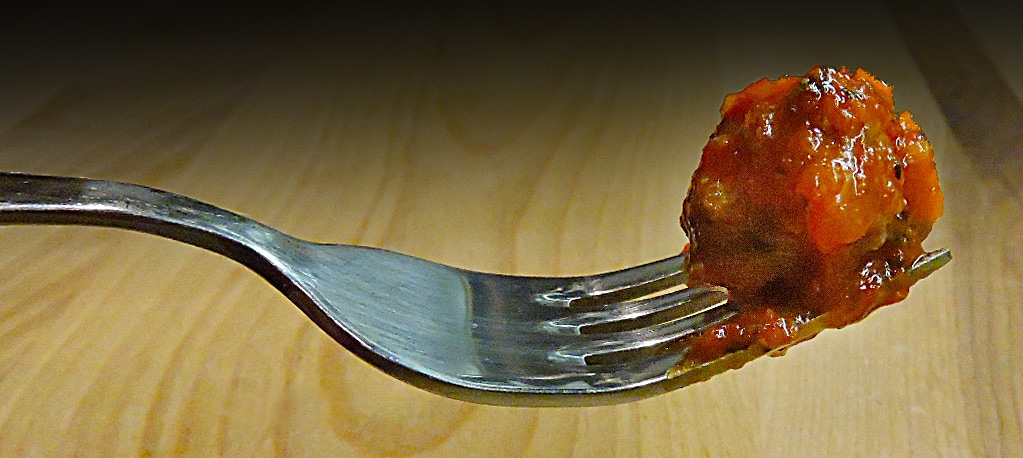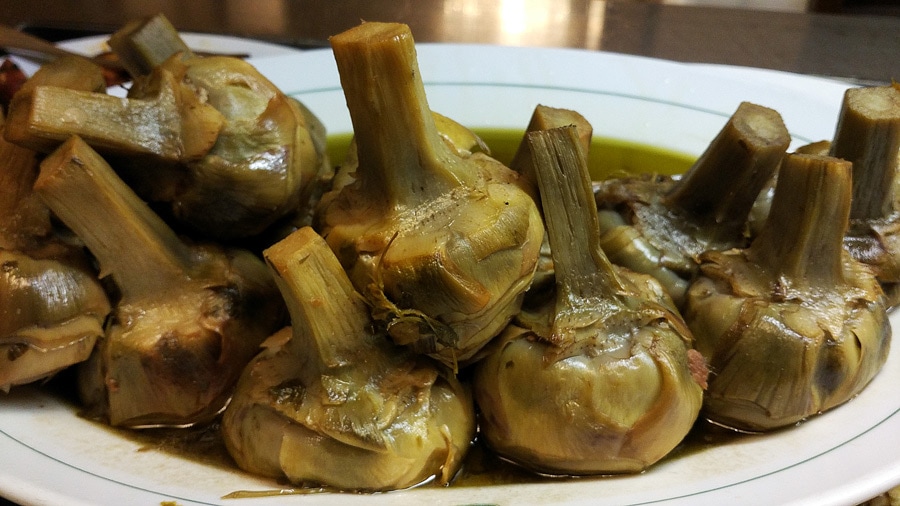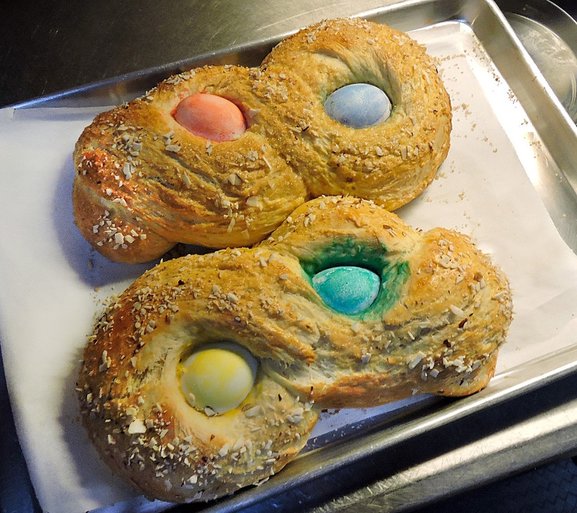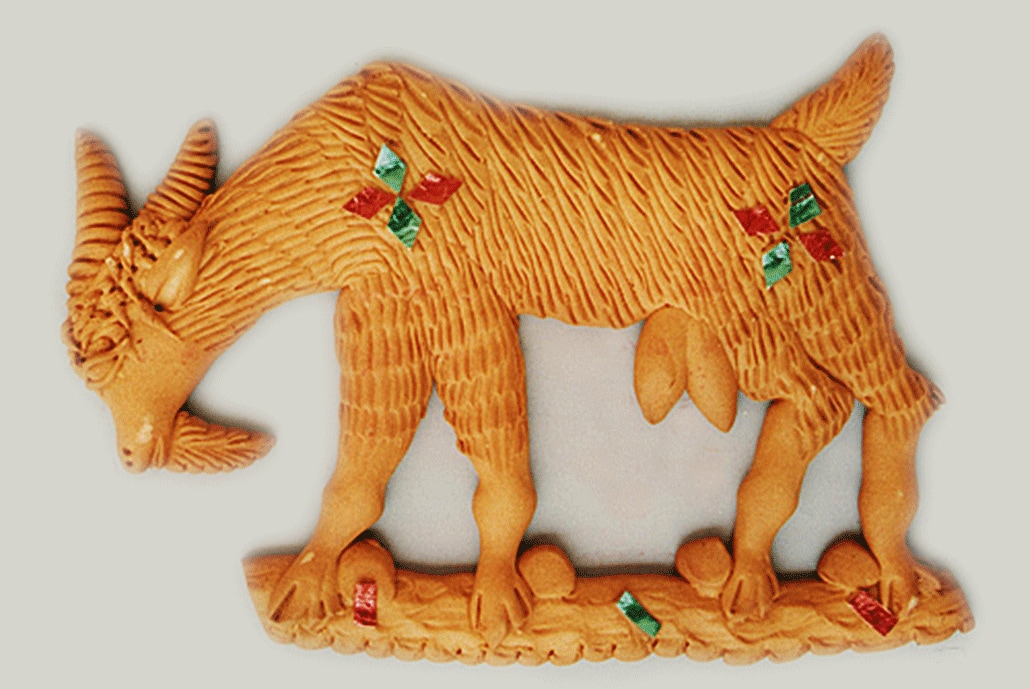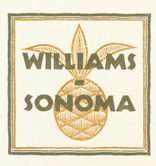 To me, this is the most common country kitchen layout... note the cooktop and corner hood, mimicking the open wood fire grill in historic Cucina To me, this is the most common country kitchen layout... note the cooktop and corner hood, mimicking the open wood fire grill in historic Cucina
When we traveled through Italy, we fell in love with the style of la Cucina Rustica (the Rustic Kitchen), which still influence modern kitchen layouts. Stone, brick, tile and terracotta are the main materials used for sinks, counters, floors and other structures. If there is stone or brick in the structure, exposing them adds to the feeling of warmth. Wood beams on ceilings of above a hearth is almost a requirement. Often a modern cooktop and small oven (by American standards) are complimented by a propane tank and gas burner set into iron legs or an wood coal heated grill built right into the walls of the structure. There are many Cucina that have large and deep cooking hearths where pots would hang for cooking and baking. Modern farm style apron sinks popular today are mere great-grandchildren of the one piece carved and decorated marble or travertine sinks found in vintage Italian country kitchens.
 Pointed roofs of Trullo Gallo Rosso Pointed roofs of Trullo Gallo Rosso
The two photos above were taken in Trullo Gallo Rosso, a wonderfully restored compound of trulli that he runs as a B&B in Puglia. Our host Hugo prepared fantastic breakfasts in his own version of a Cucina Rustica. The property was originally owned by his grandparents and still contains treasures from his Nonna's cucina as well as well as keeping alive the traditional food.
 Stefano, his co-pilot Roberto and wife Gianna Stefano, his co-pilot Roberto and wife Gianna
The photo above was taken in the Cucina of our hot air balloon pilot's home in Tuscany (Idea Balloon Tuscany). Gianna and Stefano made us feel right at home, sharing wine, sausage, bread, cheeses and other treats... along with being able to scratch the bellies of their many pooches. Stefano told me that he had done much of the carpentry himself--the hand hewn thick walnut counter in the foreground can rotate to the other side of the kitchen via a floor-to-ceiling huge pivoting post. And just take a look at the kitchen table he built.
Even modern Italian kitchens don't need a lot of space. The fridge is small because most people pick up fresh food from markets and shops pretty much every day. There are less cupboards because Italian cuisine requires less equipment to prepare and cook and serve the foods. Their meals are simpler--small breakfasts and dinners--because pranzo (lunch) is the main meal of the day during the 2-3 hours riposa. Coffee machines are rare because most people prefer making espresso with their little Bialetti Moka pot. So open shelves are plenty for storage. One more element that might be overlooked is indoor shutters--in Italy, used to shut out the light and heat during the midday riposa.
Finishing touches and accessories to complete the
Cucina Rustica look...
To finish off a Cucina Rustica, you need accessories that not only look the part, but function well. After all, simplicity is the key in Italian cooking and kitchens. Great, long lasting pots hanging on a wall rack, good quality knives, storage jars and jugs, cutting boards and pizza peels, pasta bowls, a wall rack with your most used kitchen tools and of course, the ubiquitous Moka pot to make your espresso. I'll finish off with some ideas to inspire you in creating your own Cucina Rustica with some recommendations from Amazon products...
Buona cucina! --Jerry Finzi
In the province of Teramo, in Abruzzo there is a recipe that rivals the Sugo of the Neapolitan tradition: Chitarra con Pallottini. If there is any ancestor of Italian-American style "spaghetti & meatballs" (a dish that doesn't exist in Italy), then this is it... Let me explain the name first. Chitarra means guitar in Italian, but in this case it refers to the pasta making tool called a chitarra because it's wire strings resemble a guitar (OK, perhaps it looks more like a zither or auto-harp, but let's not quibble.) The chitarra is used to make a type of spaghetti with a square edged profile, called Pasta alla Chitarra. A thin sheet of fresh pasta is laid on top of the chitarra and a small matterello pin is rolled over the pasta to squeeze it down and through the wires, creating the square sides. The pasta falls below, picked up and dried or cooked fresh. Kids would love to help make this pasta. The name of this type of pasta has taken on the name chitarra.
As for the Pallottini... palla means ball, the "-ini" ending means they are small. Small isn't the word. These Abruzzo meatballs are absolutely tiny. When I made this recipe, it took me well over an hour to make 268 tiny pallottine from about 3 pounds of minced, lean chuck. (Yes, I counted them). I should have waited until my son, Lucas came home from school to help me! While making them, I discovered that it was difficult to make the pallotine as small as the ones I found in authentic Abruzzese recipes. Mine came out around 3/4 inch in diameter... instead of the 1/2" or smaller seen in Abruzzo. The problem was trying to pinch a small enough bit of meat in between the tips of my fingers. Perhaps using a 1/4 teaspoon measure would have worked better. Tiny fingers and hands of young children would be perfect for the task, but knowing how tedious this task is, more than likely it would be considered as child labor. On Sundays, when Neapolitan nonnas and mamas are making their Sugo, the kitchens in Abruzzo are filled with similar scents of Nonnas making their Sugo, pasta alla chitarra and pallottine. Traditionally, the dish is accompanied by a rich meat and tomato based Sugo rather than a simple marinara sauce. The sugo is slow-cooked all day with lamb, beef, and pork added to a large pot of crushed tomatoes. The sauce isn't finished until the meat easily falls or shreds apart and can be mixed into the sugo. In my recipe, I slow cooked the pallottine with crushed tomatoes and spices, leaving out the other meats. My thinking was that 3 pounds of tiny meatballs will still add loads of meaty flavor to the resulting sugo. Some claim that Chitarra con Pallottini is a dish from the Piedmont region in the north from the early 20th century. In Abruzzo people have been making and eating pallottini since the early 1800s, a full 100 years earlier. To add to the confusion, a recent report by an Italian expert in archeological gastronomy discovered a Piedmont recipe in a monk's cookbook dated 1344 that described tiny meatballs used in a rice and pork blood dish. Wherever it stemmed from, this dish is unique and well worth making... Since I didn't have a Chitarra when I made this recipe, I used some 3/4 inch wide tagliatelle for my dish. I also changed up the recipe a bit from the originals I found. They tend to use nothing but ground beef, one egg and a sprinkle of nutmeg to make the pallottini. I wanted to add a bit more flavor, so I added a very small minced of garlic (in a jar, imported from Italy) and since these meatballs were SO tiny, I couldn't use fresh diced onions as I do in normal sized polpette. Instead, I used dried onion flakes, knowing they would re-hydrate when added to the meat mixture. I won't get into the recipe for the traditional Sugo here, but if you like, you can make my recipe HERE. Otherwise, for a fresher sauce, make a quick marinara with crushed tomatoes, a bit of sugar, and a decent amount of dried basil. Ingredients (pallottini) 3 pounds of lean, chopped (minced) chuck/beef 2 tablespoons dried onion flakes 2 teaspoon minced garlic (in jar) 2 tablespoons fine sea salt 40 cracks fresh black pepper 1/2 teaspoon red pepper flakes 1 beaten egg Directions In a large mixing bowl, mix the minced chuck with the beaten egg, the minced garlic and all the other dry spices. Get in there with your hands and mix really well, until you are certain that each and every tiny meatball will get an assortment of garlic, onion flakes and other spices. Lay out several sheets of wax paper on your work counter and start making the pallotine. If using your bare hands, barely pinch a little bit of meat mixture in between the tips of your thumb and two forefingers. Roll the meat into a ball shape between your palms. As I mentioned, the pallottine should be less than 3/4 inch around. If you want to try a 1/4 teaspoon measure, this might help to measure out a smaller amount. Once you finished making all of the pallottine, heat a large saute pan with light olive oil filled to a depth of 3/4 inch deep. If you would like to brown the pallottine a bit more, you can use half the amount of oil, but you will have to pay much more attention to turning them as they brown. These tiny balls cook quickly! Cook them in batches and remove with a slotted spoon, then place on a large baking tray covered with several layers of paper towels to drain. When completed, you can place them in your marinara or Sugo and slowly simmer for about 1-1/2 hours or longer if you are adding them to a Sugo with several other meats. So, the next time someone claims there is no such thing as Spaghetti and Meatballs in Italy, try winning a bar bet with your knowledge of Pallottine!
Buon appetito! P.S. When I get my Chitarra tool, I'll update this article with photos of the Pallottine on top of fresh made Pasta alla Chitarra. --Jerry Finzi  Vintage Italian Majolica Seder plate Vintage Italian Majolica Seder plate Since the arrival of Jews in Italy in 2nd century BC, the tradition of celebrating Pesach (Passover) festival has been assimilated into culture of Italian Jews. Italian Jews have developed their own unique style... with Passover being referred to as Pasqua Ebraica (Jewish Easter) and enjoying the tradition of Pesach all'Italiana dishes. The basic tradition of serving the Seder meal remains the same, presenting the Seder table with great happiness, joy and accompanied by singing traditional songs.
The Pesach festival is celebrated to commemorate the freedom of the Jews from oppression and slavery under the Egyptians over 3000 years ago. This year it is celebrated from the 10th to the 18th of April. Jewish communities are all over Italy... Rome, Florence, Ferarra, Venice, Pitigliano, Bologna, Genoa, Trieste, Ancona, Naples Padua, Pisa, Modena, Siena, Parma, Verona and also in Puglia, Campania, Sicily, and Calabria.
My family name has its ancient history in Jewish roots, although my small branch of the Finzi's have been Catholic in modern history. As my family celebrates Easter this year, I would like to offer my best wishes and... Felice Festa Pesach! --Jerry Finzi Boy oh Boy! Our Boy Lucas Can Really Cook: His Amalfi Lemon and Turkey Pasta with Prosecco4/11/2017  Chef Lucas Chef Lucas Once in a while I just don't feel like cooking, and my wife Lisa has been working a bit late, so we opt for a simple salad for dinner or call for take-out pizza or Chinese food. But last night was different. Our boy Lucas said he wanted to make dinner! Now he's helped us both before on our recipes, he is great at making fresh pasta, and his knife skills are getting better and better all the time. And since he was little (he's almost 14 now), he's had an amazing affinity for spices, often making his own spice mixes for pasta, popcorn, corn on the cob and the like. Well, this time, he set out to make a proper meal for us... Before I knew it he was printing out my recipe for Amalfi Lemon and Chicken Pasta. When I heard what he wanted to make, I warned him that we didn't have any fresh chicken out--only frozen (and it was 1/2 before our normal dinner time). Instantly, he improvised and pulled out the small Boars Head Oven Gold Turkey loaf that I had recently bought. When we looked for white wine, we had none... so after advising him on the things we had that might make a similar base for a sauce, he substituted 1 cup of Prosecco. In place of the red pepper flakes he did a very fine dice of some flame colored bell pepper... and I might add that his knife skills were superb! His dice was even and very small... perhaps 1/8"! Bravo, Lucas! I played the role of his Sous Chef only--putting on the large pot of water for pasta, helping him mise en place his ingredients, measuring out the sherry, etc. I did take over doing the lemon zest when he nicked his knuckle a bit when using the micro-plane, but after all, it was his first time using that tool. He did all the rest of the prep and cooking himself. He started by browning pieces of turkey in a saute pan, then added the peppers, lemon zest, sherry, spices and then the Half & Half and turned the flame to high to reduce the sauce. Toward the end of cooking, I coached him about reducing the sauce and how to tell if the sauce was thick enough by dragging his wooden spoon along the bottom of the pan until it left a clear wake in its path. I drained his pasta for him (he chose a mix of two types of tricolor farfalle) and poured it into a large pasta bowl. Then he put the completed sauce on top, added a couple of handfuls of Parmigiano Reggiano and mixed. The final dish was incredibly good! The sherry worked great in the sauce, the turkey was flavorful from the browning, and the lemon juice and zest brought us right back to the Amalfi Coast. It was one of the best meals we had in a while! When Lisa asked if it was as good as the Chicken Lasagna she made for us on the weekend, I had to confess--it was. When I think back at myself at the same age, I was heating up cans of Chef Boyardee, cooking packets of Lipton Noodle Soup, throwing some frozen fish sticks or fish cakes into a fry pan or making grilled cheese... wow! Some difference. This boy can really cook! --Jerry Finzi <--- the Proud Babbo There's nothing like making a Pane di Pasqua for Easter. This is a traditional holiday egg bread that usually contains hard boiled eggs--baked right into the bread. It can be eaten as a snack with honey or jam, served with a meal or given as gifts when visiting family. Variations of Easter celebration breads are made throughout Italy. To celebrate Easter in Sicily, they make "baby-doll" breads for girls, and breads shaped like ducks, lambs and horses for boys. In most areas of Italy, there are Easter breads and mostly are sweet and contain whole, brightly dyed eggs which are braided into the bread, with the eggs cooking during the baking. In Lombardy there is the Colomba Pasquale (literally "Easter dove"), which has become popular throughout Italy. In Sardinia, the celebration breads get even more intricate, with scissor work on the dough adding amazing details in Easter egg baskets. The eggs can be brightly colored or natural. In the Greek tradition, the same sort of bread is made with eggs dyed red by using onion skins. The eggs represent birth, or rather, at Easter the re-birth. This recipe can make one round bread or two smaller straight braided breads, or 6 individual breads. Boiling and Dying the eggs: For perfect eggs:
You can dye 4-6 eggs, only after hard-boiling them. In the past, I've tried to use raw eggs placed directly in the dough, but they often are a bit under-cooked--not soft boiled, but a bit under. If you want to make real looking like partridge eggs, dye them a pale blue and then use a tooth brush with brown dye to put blotches and spots all over each egg. Proofing the Yeast: 1 tablespoon instant or active dry yeast. 1/3 cup milk (at 115 F) 1 tablespoon sugar
For the dough: 2 1/2 - 3 cups all-purpose flour (depends on humidity... don't put in all the flour if it doesn't need it, but if it's a rainy day or you're using jumbo eggs, you might need 4 cups). 1/2 cup warm milk (115 F) 1/4 cup orange juice (room temperature) 1/2 cup sugar 1 teaspoon salt 8 tablespoons butter (softened & cut into small pieces) 3 eggs well beaten (You can substitute Egg Beaters if you like). 1 teaspoon vanilla (or almond flavoring for a more Italian flavor) For egg wash and topping: 2 eggs beaten (egg wash for brushing) 2 tablespoons sliced almonds 2 tablespoons turbinado sugar colored sprinkles (optional) Directions
Forming the Bread
Here are some other variations on Pane di Pasqua... --Jerry Finzi
Here in our home, one of our Christmas traditions is making gingerbread cookies and one gingerbread house each year. (CLICK to see one of our creations.) I often wondered if there is something similar in Italy and in fact, I discovered something very similar to gingerbread made in Campania, Calabria, Sicily and most of southern Italy: the Mostaccioli, a shaped, spiced, and unleavened hard cookie. Depending on the recipe, they may contain wine must (leftover from the wine making process), red wine or honey. Mostaccioli are not only for Christmas, but also for Easter and other sagre and religious festivals. With its roots deep in Italian history, perhaps from the time of the Romans when they were placed on temple alters as offerings to the Roman gods, the tradition of Mostaccioli was continued by 15th century Dominican monks. These shaped, edible works of art are very hard and long-lasting--just like gingerbread. 
You might see Mostaccioli under other names in local dialects throughout Southern Italy: Mastazzola, Mustazzoli, Mastazzuolu, 'Nzuddha, Mustazzuali, Mustazzolus (in Sardinia). Those dialects in the south can change from village to village! Regardless of the name, this spice cookie is considered by most historians to be the oldest cookie recipe in the world.
The name comes from the Latin mustacea, a cake made out of “must” (un-fermented, pressed grapes, including skins, seeds and stems) that has been made since at least 300 BC. In the 1st century AD, the ancient Roman philosopher, Cato, wrote about mustacea being made with rye flour, cheese, cumin, anise, cheese, eggs and wrapped in bay leaves. Modern recipes are very different from 2000 years ago, but Mostaccioli have been made throughout central and southern Italy for hundreds of years--maybe more. The recipes for creating the most intricate shapes contain no leavening and create a dough that can be shaped by sculpting tools or pressed into molds.
While most versions contain honey, others might contain chocolate, but in all cases they are very spicy, similar to a spice cookie or gingerbread. There are simpler, non-sculpted Mostaccioli, in either a round or diamond shape, that are covered with a chocolate icing, which are more common--especially with home bakers. Some may even contain various nuts like almonds, hazelnuts or pignoli and might be shaped into a traditional biscotti shape. One version in Puglia even adds a special ingredient: a sweet wine with sugar added that has been reduced over heat into a syrup... adding a hint of the cookie's ancient past when grape must was used.
CLICK HERE for a Ciao Italia recipe.
(NOTE: There are also recipes for a pasta called Mostaccioli, typically in a penne shape.)
Food historians tend to agree that the current recipe gained popularity in 1653 after Saint Domenico--the patron saint of the Kingdom of Naples--distributed Mostaccioli cookies after a devastating earthquake in Sariano, Calabria. Every since then, on August 16th (my birthday and the Feast Day of St. Domenico), people in Calabria celebrate by baking Mostaccioli cookies and auctioning them off to benefit charity.
The traditional shapes hearken back to temple offerings: a parma (the palm), a sirena (the siren), u panaru (the basket), u pisci spada (swordfish), and a grasta (the heart)... all real items that historically might have been left as an alter offering. The other shapes--saints, goats, roosters, horses, pigs, lambs and birds--reflect Roman Catholic holidays and the desire to please children around the holidays. Besides Christmas, Mostaccioli are also given as gifts at Easter, weddings and on special saint days. The intricate shapes are made even more decorative by the addition of colored foil "jewels". Some of these cookies have been elevated to a fine art form and were the subject of a special exhibit at National Museum of Applied Arts in Rome with 36 ancient shapes being displayed.
During both Natale (Christmas) and Pasqua (Easter) and other saint Festa and harvest Sagre celebrations, you will often see Mostazzolari (vendors) selling their cookies at throughout Italy, but especially in the South. Many display their cookies in a traditional manner--in wooden treasure chests. After all, these do resemble precious bejeweled treasures.

Recipe for traditional Mostaccioli for Molding or Shaping
The Preparation is straightforward and simple..... it takes only three ingredients... Equal weights of flour and honey: 16 ounces of 00 Italian flour, or all-purpose flour 16 ounces honey 1 tablespoon lard (or shortening) 1/2 cup of either: grape must, Anisette, Sweet Marsala or white grape juice
A more traditional method: You can prepare the dough using one part water and three parts honey, heated in a double boiler while sifting flour slowly until a dough is formed. Let the resulting dough rest, covered overnight and then knead by hand.
--Jerry Finzi
Watch this video to see these Masters of the craft sculpt their Mostaccioli...
Copyright 2017, Jerry Finzi/Grand Voyage Italy - All Rights Reserved
|
Archives
May 2024
Categories
All
|



























